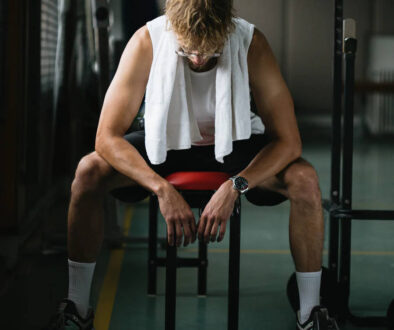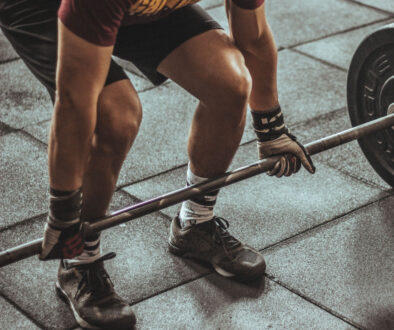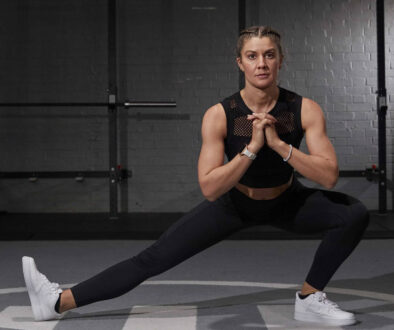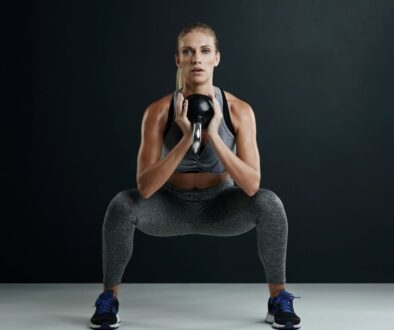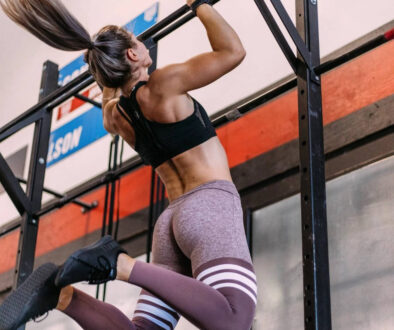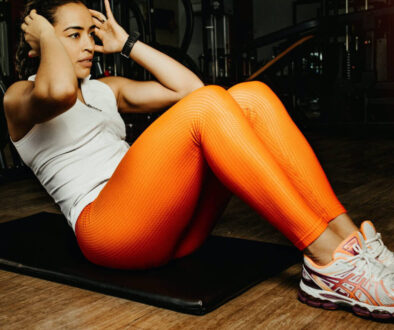Gymnastic Rings: The ultimate beginners’ guide
Getting started on gymnastic rings can be a pretty daunting task. For individuals who are thinking of swinging into a new physique for the first time, a small amount of research on ring training can often leave you with more questions than answers.

Many of us have been left scratching our heads as various internet sites throw out contradicting information on what to buy, how to start, where to use them, whether to get tape. The list goes on.
Not to fear though. We’ve saved you the hassle of researching a variety of sites with our complete beginners’ guide to getting started on gymnastic rings.
Why train with rings?
With all the hi-tech and fancy gym equipment on the market today, each with the ability to isolate muscles you didn’t even know you had, the idea of two wooden circles hanging by strap seems rather rudimentary.
Yet, if I was sent to a desert island and only allowed one piece of workout equipment to take with me, it would easily be a set of gymnastic rings. Their versatility, effectiveness, and convenience make them an essential part of any strength athlete’s inventory.
1. Effective
Being suspended in space, gymnastic rings are free to swing and move around making even simple tasks like holding yourself up on them highly taxing. The lack of stability means you’re forced to steady your body when performing movements, thus engaging multiple muscle groups that all have to work together.

As a result, rings can provide a faster way of building strength and muscle mass compared to most other bodyweight equipment. They can provide a demanding yet highly effective workout for your upper body and core.
2. Portable
Rings are incredibly portable meaning they can be taken and used pretty much anywhere you like. As long as you can find somewhere to hang them from, you’ll always be able to carry a mini gym around with you.
3. Versatile
Rings are capable of training a huge range of movements and muscles in just one workout. There aren’t many equipments that can match the complete workout that rings deliver without you having to leave that one spot.
You can build pushing, pulling, and core strength to incredible levels with a set of rings if you’re workout is varied enough.
Any exercise you do on the rings can also be scaled up or down to suit your strength level. So, whether you’re just beginning your fitness journey, or you’re a seasoned strength athlete, you can make significant gains using rings.
4. Enjoyable
The list of movements you can master on the rings is endless. You’ve got your beginner moves such as dips, pull-ups, and push-ups through to your more advanced moves like the muscle-up, in & outs, and forward rolls, right the way up to your herculean strength movements such as the crucifix or Maltese position.
Because of this, ring work is never likely to get boring or mundane. With infinite possibilities, you’ll never run out of exercises to try. Once you’ve completed one movement, you can move straight on and begin the progressions to another.
Which rings do I get?
Rings tend to come in 2 different materials. Wood vs steel. You can get plastic ones but it’s worth writing these off right away. Whilst they’re lightweight and cheap, they lack the wearability of steel, get incredibly slippy, and don’t have the feel that wooden rings provide.
1. Wood rings: Benefits & Disadvantages
Most ring enthusiasts and professional gymnasts will swear by the wooden rings. They have several key advantages over steel rings which make them the ring of choice for many.
A. Used in competition
Wood rings are the only rings used in competition, hence why they’re endorsed and used by Olympians. Of course, this is only really relevant if you’re planning to enter professional gymnastic comps.

B. Better grip
Wooden rings are notable for the improved feel they offer the user. Nothing comes close to the natural feeling of wood rings. The smooth surface allows you to feel your way into the exercises and gives you more control.
They also retain chalk well and provide good grip, thus helping reduce calluses and blisters on your hands.
C. Practical
Wood rings are usually priced at affordable rates, even higher quality rings. Their practicality is enhanced by them being lightweight and easy to carry around.
For all their advantages though, there are a couple of limitations to using wooden rings.
Before buying your rings you should consider where you are going to store them. If the answer is outdoors or a space that is susceptible to extreme temperatures, sunlight, or water, then it might be best to get a material more durable than wood. Wooden rings can quickly warp and deteriorate if not stored indoors.
2. Steel rings: Benefits & Disadvantages
Steel rings aren’t as common in gyms compared to wood rings, but still have their place if you’re looking to primarily workout outdoors or likely to be storing them in unsafe places. Steel rings have a few advantages that lead to some ring users choosing them over wood rings.
A. Resilient and durable
Steel rings cannot be beaten in durability. They’re extremely resilient to the elements so you can store them outdoors indefinitely without worrying about wear and tear.
B. Heavy
The extra weight of steel rings can be an advantage when using them. The extra weight gives them a little more stability making them perfect for those who struggle with performing dips or push-ups.
Unfortunately, steel rings are ridden with a few cons as well. The powder coating used on most is great for protection against the weather but does tend to leave the rings susceptible to chipping and dents.
They don’t grip well either. As soon as you start to sweat they will start to feel very slippy. This is exacerbated by their failure to hold chalk well.
When looking at the bigger picture, the cons of steel rings outweigh the pros. Specifically, if you are using and storing your rings outdoors, you’re better off going with wooden rings. In the long run, you will save yourself money having to replace it.

How do rings compare to other calisthenic equipment?
Calisthenic training encompasses a wide variety of (mostly pretty cool) exercises that rely on bodyweight, control, core strength, and full-body engagement. Rings are just one aspect of a wide range of calisthenic equipment you can buy for your home.
For me, you don’t need anything other than a set of rings to begin your calisthenics journey. They have very few downsides and unlike other calisthenic equipment, there is no limit to which muscles you can train.
Here is how they compare to other equipment in the calisthenic world.
1. Dip bars
If you have the space, dip bars can be a fantastic addition to your home workouts. They work for any fitness level and allow you to work on any push/pull movement easily. A key benefit of them is they offer an easier method of building the necessary core strength and stability for ring dips.
If you are an absolute beginner, dip bars are a perfect way to learn body control. They do however limit the number of exercises you can do, so they would need to be an addition to your home gym rather than the only item in it. They also take up a lot of space so your other equipment won’t have much room to fit anyway!
Rings, on the other hand, whilst harder take up a lot less space and offer a lot more variety of exercises beyond just dips and rows. This can support anyone looking to try their hand at calisthenics without the need to buy loads of specialist equipment.
2. Pull-up bar
Pull-up bars are amongst the most straightforward pieces of equipment you can get for a home gym. On top of that, they can be extremely affordable and fit easily in small spaces.

Using a pull-up bar you can work a wide variety of upper body muscles including back, arms, shoulders, and core. They can even support increased mobility and flexibility.
Rings on the other hand offer all the same exercises and so much more. They’re just as portable and whilst the exercises are more challenging due to the lack of stability, the variety of exercises and progressions you can do means you will never get bored of them.
Honestly, the main use for my pull-up bar these days is as an anchor to hang my rings off during home workouts.
A benefit the pull-up bar does have is its ability to isolate specific muscles. You can change your grip to target certain areas, a feature the rings can’t quite offer. With the rings, you will utilize a variety of muscles on the pull-up, mainly due to the unstable movements of the rings.
Are there any downsides to getting rings?
As with anything, there are a couple of cons to consider with gymnastic rings.
Firstly, they’re seriously hard. You need a high amount of body control and strength to even begin exercising on rings. There are regressions but the difficulty can be a setback for some so be prepared to fight through the hard bits at the start.
Secondly, they lack any serious ability to work the legs. There are a few bodyweight exercises but nothing that will bring about the same results as a squat or deadlift session.
Finally, it can be hard to see or quantify the results of your ring training immediately. Ring training is not as simple as adding an extra plate to the barbell to see if you’ve made progress. It can be frustrating at times and many get stuck on one exercise or progression for a long time. The key to resolving this is perseverance and understanding that ring training is about the long game, not short-term goals.
Should I get rings then?
I’m sure you’ve figured out my answer to this question by now. Yes, I would definitely recommend!
If you’re looking to get fitter through calisthenics, improve your physique, or just need a new fitness challenge to spice up your workouts, rings are without a doubt the way to go.
All the exercises you can perform on other individual calisthenic apparatus can be done in just one piece of equipment. Whether you’re a beginner learning the ways of calisthenic training or you’re a bodyweight training pro, rings are a practical, budget-friendly, and extremely enjoyable addition to your home gym.





